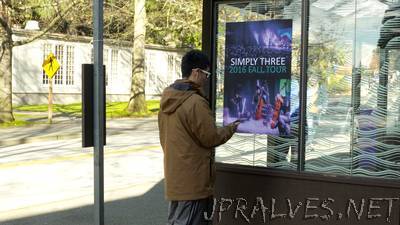
“Imagine you’re waiting in your car and a poster for a concert from a local band catches your eye. What if you could just tune your car to a radio station and actually listen to that band’s music? Or perhaps you see the poster on the side of a bus stop. What if it could send your smartphone a link for discounted tickets or give you directions to the venue? Going further, imagine you go for a run, and your shirt can sense your perspiration and send data on your vital signs directly to your phone. A new technique pioneered by University of Washington engineers makes these “smart” posters and clothing a reality by allowing them to communicate directly with your car’s radio or your smartphone. For instance, bus stop billboards could send digital content about local attractions. A street sign could broadcast the name of an intersection or notice that it is safe to cross a street, improving accessibility for the disabled. In addition, clothing with integrated sensors could monitor vital signs and send them to a phone.”
